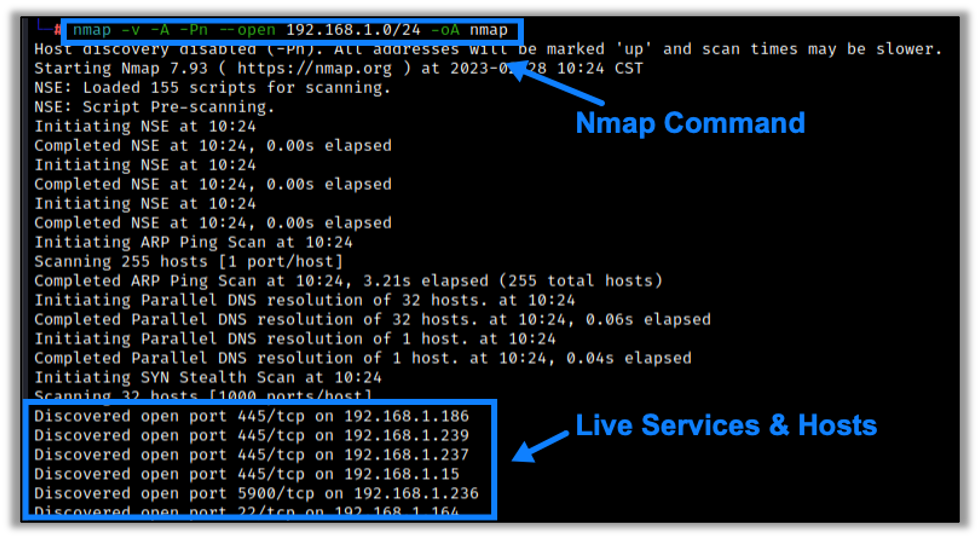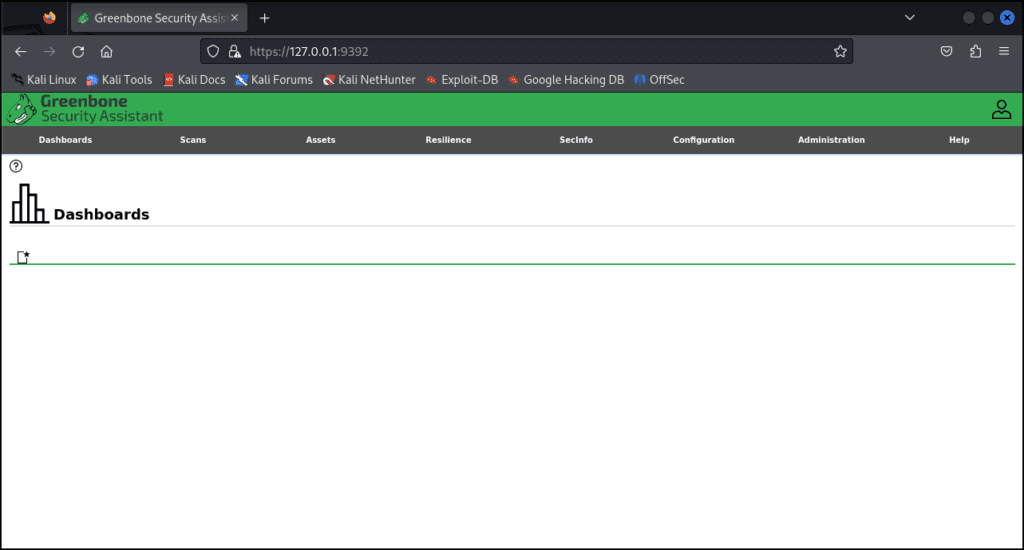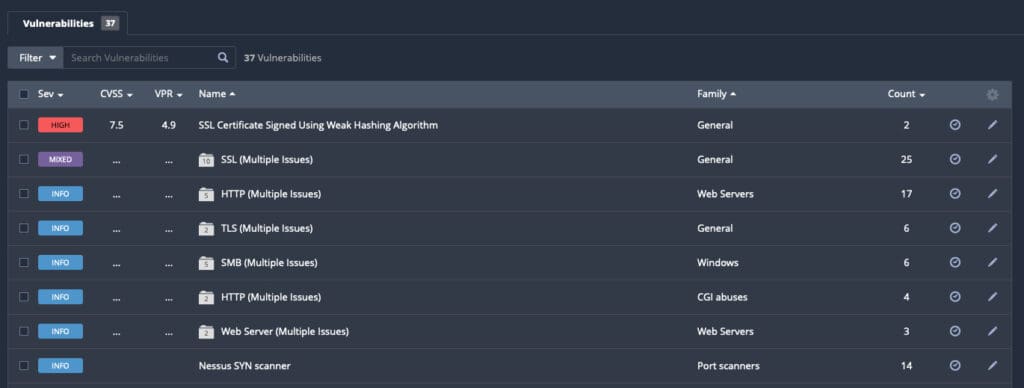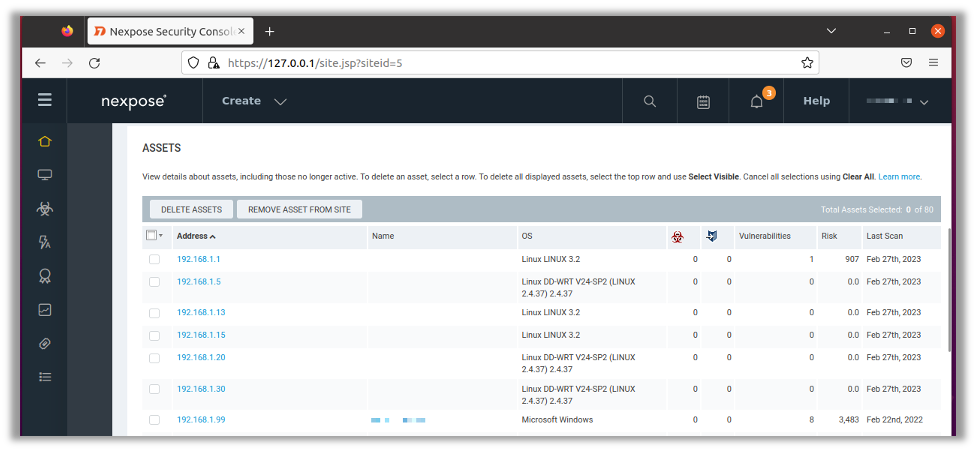Before starting any penetration test, you must know the scope of the work. Depending on the type of assessment, this could be specific hosts or full ranges of IP addresses with live hosts scattered throughout. If the scope is the latter, then it is a good idea to initially identify which hosts are live and then discover common, known vulnerabilities on the hosts. This will narrow down the attack surface and potential attack vectors to help establish a list of priority targets during the assessment.
There are several tools that I like to use when I start a new assessment. Some are free open-source tools, while others are commercial.
Open-Source Tools
Nmap
The first tool I always use in Nmap. Nmap is an open-source tool that can identify live hosts and services by conducting protocol enumeration across systems. It can also be used for specific configuration checks or even as a vulnerability scanner by using the Nmap Scripting Engine (NSE).
Even when I use Nmap with vulnerability scanners, I still regularly utilize Nmap scripts. Nmap come pre-installed with Kali Linux but can easily be installed on any Linux or Windows system. Using Nmap for the first time can be intimidating, but after using it for a bit, users often find it very easy and reliable. I usually run the initial scans by ignoring ICMP checks (Ping) and just assume that all hosts are live. I do this because some network admins like to disable ICMP on live hosts as a security measure (Good on ’em!).
nmap -v -A --open -Pn -iL targets.txt -oA nmap_scanNote: -Pn disables the ICMP check.
If the scope is extremely large and the Nmap scans won’t complete in the time allowed, I enable the ICMP check by remove the “-Pn”:
nmap -v -A --open -iL targets.txt -oA nmap_scanBelow is a screen shot of a typical initial scan I perform on network assessments (internal & external):
nmap -v -A -Pn --open {IP Range} -oA {Output File Name}
The commands above are easy to learn once you use them a few times, and I’ll cover what is going on here.
- First, I like to use the “-v” which enables verbose outputs.
- The “-A” enables OS and version detection, as well as script scanning and traceroute output.
- “-Pn” disables ICMP ping for host discovery, causing the scan to assume that all hosts are live.
- Next, we have the IP range, in this instance a standard /24 internal network. If I have specific hosts or multiple ranges to target, I will create a text file and use the “-iL” switch to point to the text file.
- Lastly, I like to output the results to all supported formats by setting “-oA.” The reason I do this is because I like to ensure I have the different file types for future use. For example, the .nmap output is easy to read when I want to scan through the output. I typically use the XML output for importing into Metasploit or when using Eyewitness to enumerate web hosts.
There are quite a few good cheat sheets out there too if you let the Googles do the work for you. If not, follow this series for more Nmap tips and tricks in the future.
Masscan
Another tool similar to Nmap is Masscan. Masscan is a TCP port scanner that scans faster than Nmap. Unlike Nmap, Masscan requires you to define the ports you want to scan. I typically don’t use Masscan and just stick with Nmap, but it’s a good option if you want to quickly look for specific open ports on a network.

OpenVas
Another tool I use on occasion is OpenVAS (a.k.a. Greenbone), a vulnerability scanner. Greenbone offers a commercial version, but there is an open-source version available as well. I’ve used this many times when I am unable to access my usual vulnerability scanners. One downside to the tool is that It can be difficult to install. I recently followed the instructions for installing with Kali and ran into quite a few issues with the install. I’ve also noticed that the initial setup can take some time due to the signatures that are downloaded. If purchasing a commercial vulnerability scanner is too expensive, then Greenbone is definitely worth looking into, despite its challenges.

Commercial Tools
Nessus
By far, my favorite vulnerability scanner is Tenable’s Nessus. There is a free version available, but it’s limited to 16 IP addresses. If you are doing a lot of vulnerability scanning or time-boxed penetration tests, then it might be worth looking into purchasing this.
The thing I like most about Nessus is how I can sort by vulnerabilities across all hosts in a given scan. I can also sort these vulnerabilities by risk rating, which helps me narrow down critical or specific vulnerabilities to exploit or signs that a host or service may be a high priority for a closer look.
When viewing Nessus results, never ignore the informational findings. They often provide clues that more may be going on on a host or service than you realize at first glance.

Nexpose
Another great vulnerability assessment tool is Nexpose, owned by Rapid7. Nexpose is similar to Nessus, as it provides similar vulnerabilities. There are some slight differences in the way the products display results.
Nexpose is built around “sites.” Each site has defined hosts or IP ranges under it. From there each host’s vulnerabilities will be listed. The easiest way I’ve found to list out all vulnerabilities is to create a report from the site I’m working in.
Besides greater extensibility, one major advantage with Nexpose is that it ties in with Rapid7’s vulnerability management product, InsightVM. If you’re looking for a full vulnerability management solution and not just a vulnerability scanner, Nexpose is a good option to check out.

There are many other tools that I use, but these are always my first go to tools to start an assessment.
Follow the series!
Stay tuned for more posts in the Cool Tools series, where the Raxis penetration testing team will highlight some of their favorite tools and explain how to get started with them.
Take a look as Adam Fernandez dives into Nmap for Penetration Tests in the next post in this series.

